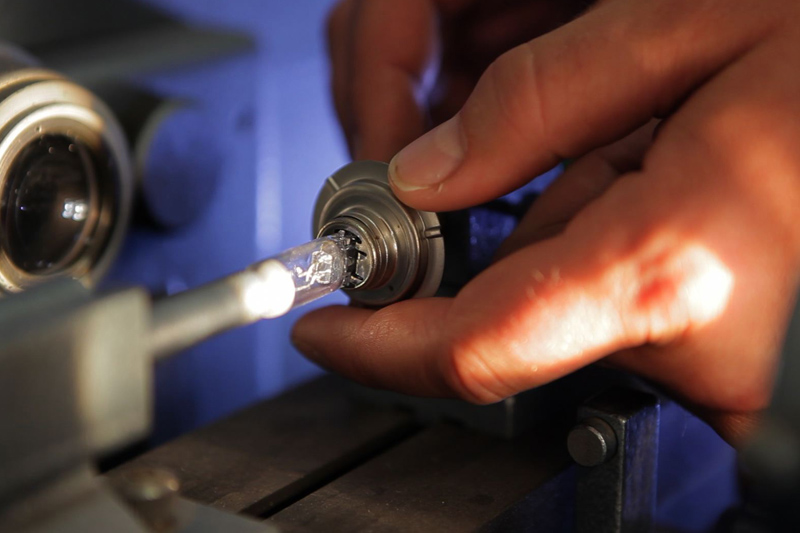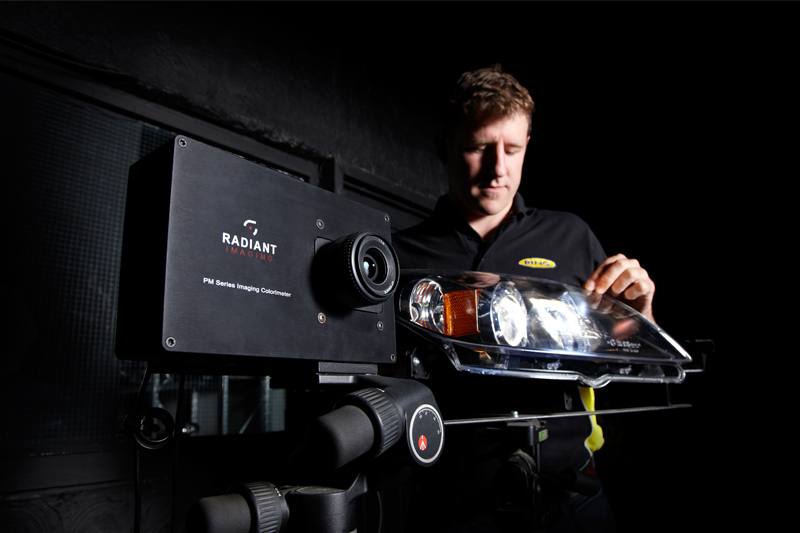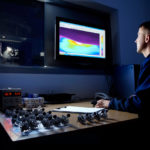Ring Automotive debunks the myths surrounding Xenon HIDs and, in light of these misconceptions, explains how the company ensures only the highest quality Xenon bulbs leave its facilities.
Despite being around for a number of years and fitted to an increasing number of cars, many garages and technicians are still reluctant to fit Xenon HIDs, often seeing them as troublesome, expensive and potentially hazardous.
To remedy this, Ring Automotive has decided to ‘bust the myths’ surrounding Xenon HID bulbs, offering up practical advice and answers for the questions the company is asked most often.
Carl Harrison, Product Manager for Automotive Lighting at Ring, said, “When carrying out market research in the UK aftermarket, some independent garages we spoke to were reluctant to fit Xenon HID bulbs. As lighting experts, it’s our job to educate the industry on this technology and open up what is a huge opportunity for their businesses.
“So we decided to take the top five myths and FAQs we hear on a regular basis and give the aftermarket the advice and answers they need.”
Myth: Xenon HID bulbs are difficult to fit.
Ring says: Once the headlamps and ignition are switched off and the fuse removed, the bulb can be replaced in much the same way as a standard halogen filament bulb.
Myth: Xenon HID bulbs must be replaced by the main dealer.
Ring says: The process of fitting a Xenon HID bulb is simple. There shoudn’t be any reason why technicians cannot fit them in the garage. To help, Ring has developed printed fitting guides and an updated fitting video, which can be found at youtube.com/RingAuto
Myth: Xenon HID bulbs last forever.
Ring says: Over the life of the bulb, the light from a Xenon HID bulb will change colour temperature and its light output will fall. With this in mind, Ring recommends replacing Xenon HID bulbs at least every five years, and both left and right bulbs at the same time to ensure light output is consistent.
Myth: You can’t tell the quality of a Xenon HID bulb just by looking at it.
Ring says: All Ring Xenon HID bulbs are E- marked to identify that they meet the strict requirements of ECE Regulation 99 – the UNECE standard for Gas Discharge Light Sources for Vehicles. Before you buy, look for the E-mark (and approval number) on the base.
Myth: The market for Xenon HID bulbs is in decline.
Ring says: The number of vehicles with HID headlamps entering the car parc is still growing. Demand for D3S bulbs in particular is growing significantly due to changes in legislation. Approximately 10% of vehicles in the UK car parc have HID headlamps.

Lighting the way
The introduction of Xenon HID bulbs has been one of the biggest vehicle lighting developments of the last 20 years. Xenon HID bulbs are different from ordinary bulbs as they have no filament. Instead, they have a glass capsule in the centre of the bulb containing xenon gas. Two metal electrodes going into the glass capsule enable a high voltage to cross the xenon gas. This voltage ignites the gas to produce a bright white light output.
For the bulbs to illuminate, the start-up voltage has to be very high and therefore a ballast is required for each headlamp. These ballasts convert the vehicle’s 12V DC voltage to ignite the bulb and then maintain a lower operating voltage.
As Xenon HID bulbs become more common and are no longer restricted to just premium or luxury cars, many more motorists will start to benefit from the crisper, whiter colour temperatures, helping them see road signs and obstacles more clearly. In addition, legislation was introduced in 2012 so that new vehicles produced beyond this point would use D3 and D4 references, which do not contain mercury.
Quality Assurance
Ring’s Quality Assurance (QA) laboratories are claimed to contain some of the most advanced testing equipment in Europe, and have been independently assessed by BSI, achieving an ISO:9001:2015 accredited quality management system.

The facilities
In the lighting testing facilities, Ring tests its vehicle bulbs to check that they comply with vehicle lighting regulations, including ECE Reg. 99, which covers Xenon HID bulbs. In these facilities, Ring also checks that the bulbs are consistent across different headlamp units, so that factors can be sure that a Ring Xenon HID bulb will always perform to the expected high standards. As HIDs can also be used in 24V commercial vehicles, they are also stress tested to evaluate their performance in tough conditions.
The Bentham Instruments IS100 Integrating Sphere measures the overall light output of a bulb – there are specific parameters that are set out in the ECE regulations. It also measures the colour output, measured on the Kelvin scale, giving a colour temperature. There are legal limits for automotive lighting colour, to show that the bulbs are giving effective illumination for drivers and other road users. When new, Xenon HIDs emit a white light with a colour temperature of around 4,100K – much whiter than a standard halogen, which is around 2,700K.
Ring also tests bulbs in its beam laboratory, where technicians evaluate how light is being distributed on the road. The Pro-lite IC-PMI8 Imaging Colorimeter camera measures light at over 8.1 megapixels, allowing the Ring team to check that the brightest spot is in the correct position. Cross line laser levels are used to make sure that comparison between beam patterns from different headlamp units can be done consistently and accurately. The camera also gives an aerial view of the beam pattern, which shows how far ahead the light reaches on the road. Ring’s bulbs are engineered to ensure that the light distribution is accurate and avoids dazzling oncoming drivers.
Xenon HIDs over time
Unlike a halogen headlamp, Xenon HID bulbs will not necessarily stop illuminating once they are approaching the end of their life. Whilst the bulbs still light up and appear white, the amount of light emitted will fall substantially after a few years. To demonstrate this, Ring tested four year old Xenon HIDs from a vehicle that had done around 60,000 miles against new Xenon HIDs. The results show that over the four years since the bulbs were new, the light output had dropped significantly. This drop greatly reduced the amount of light reaching the road and the driver’s visibility, and the bulbs were no longer road legal.
Maintaining quality
Having the labs onsite doesn’t just ensure that new bulbs are performing to a high level. Ring’s QA team is able to spot check bulbs over time, to make sure that the first, 50th, 500th and 5,000th bulb will all give exceptional performance. This gives peace of mind for motor factors, who want to be sure that what they are supplying is going to meet their customers’ expectation – particularly for high value replacements like Xenon HIDs.








